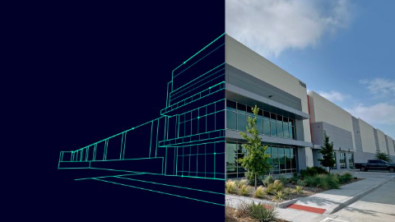Digital twins: The key to mastering cross-domain engineering challenges
Table of Contents
Your team just discovered a major flaw in your latest smart product: the electronics don’t fit the mechanical housing, and the software is incompatible with the hardware. Months of work and millions in investment are now at risk.
Modern product development’s reality is that mechanical, electrical and software components must seamlessly integrate. As our eBook “How Do I Coordinate Design Across Engineering Disciplines?” highlights, success hinges on rapid, efficient information sharing across teams.
Enter the comprehensive digital twin: a single source of truth transforming how engineering teams collaborate. It’s not just a tool; it’s a competitive necessity in today’s fast-paced market.
In this post, we’ll explore how digital twins are revolutionizing cross-domain engineering collaboration and why your team can’t afford to lag behind.
The evolution of digital twins
Digital twins have evolved from simple 3D models to comprehensive digital representations of products. Today, they are a common thread connecting design, engineering, manufacturing and service. This evolution addresses the growing complexity of modern products and the increasing number of stakeholders involved in development.
The COVID-19 pandemic accelerated the adoption of comprehensive digital twins. As work-from-home orders and social distancing mandates forced manufacturers to collaborate virtually, staying updated on the latest developments became challenging. Organizations that recognize the value of digital twins could implement them quickly, leveraging existing digital transformation initiatives.
The power of comprehensive digital twins
A comprehensive digital twin is a unifying element for all stakeholders in product development. It allows different internal and external teams to work from the same up-to-date information. This capability is crucial for early and frequent collaboration, enabling:
- Improved coordination among mechanical engineering teams
- Enhanced collaboration with electrical and electronics engineers
- Seamless integration of software components
- Efficient work with customers, suppliers and partners
When engineers work with outdated information, the results are inefficient designs and a higher likelihood of costly failures. Digital twins help catch errors early, leading to a superior cross-functional product development process.
Implementing digital twins for collaboration
Implementing a comprehensive digital twin requires a strategic approach. Key steps include:
- Assessing your current digital maturity
- Choosing a robust Product Lifecycle Management (PLM) solution
- Ensuring all stakeholders have appropriate access to digital twin data
- Implementing clear processes for updating and maintaining the digital twin
- Providing training to ensure effective use of the digital twin
The advantage of SaaS solutions
Cloud-based Software as a Service (SaaS) PLM solutions offer significant advantages for implementing digital twins:
- Efficiency: Built-in best practices support easy collaboration
- Productivity: AI/ML algorithms optimize workflows and processes
- Fast implementation: Browser-based access with minimal IT support
- Distributed total ownership: Subscription model spreads costs over time
- Extended collaboration: Secure input from both internal and external stakeholders
- Security: Controlled access to protect intellectual property
These solutions are particularly beneficial for small and medium-sized businesses, which may have limited IT resources but face many of the same challenges as larger companies.
The future of digital twins in engineering collaboration
As products become increasingly complex and involve multiple engineering disciplines, the need for a comprehensive, unified representation grows. Digital twins are at the forefront of this transformation, offering a promising solution to improve efficiency and reduce errors in product development processes.
Looking ahead, we can expect further integration of digital twins with emerging technologies like IoT and AI, potentially revolutionizing not just product development, but the entire product lifecycle from conception to service.
Conclusion
In an era of increasing product complexity and shrinking development timelines, leveraging comprehensive digital twins for improved engineering collaboration is no longer optional—it’s a necessity. As our eBook states,
Having a comprehensive digital twin… allows different stakeholders, both internal and external, to stay on the same page.
For engineers and executive engineers looking to stay competitive, embracing digital twin technology is crucial. It streamlines the development process and paves the way for more innovative, higher-quality products delivered in less time.
The question is no longer “Should we implement digital twins?” but rather “How quickly can we implement this?” The future of engineering collaboration is here, and it’s digital. Don’t let your team fall behind.

